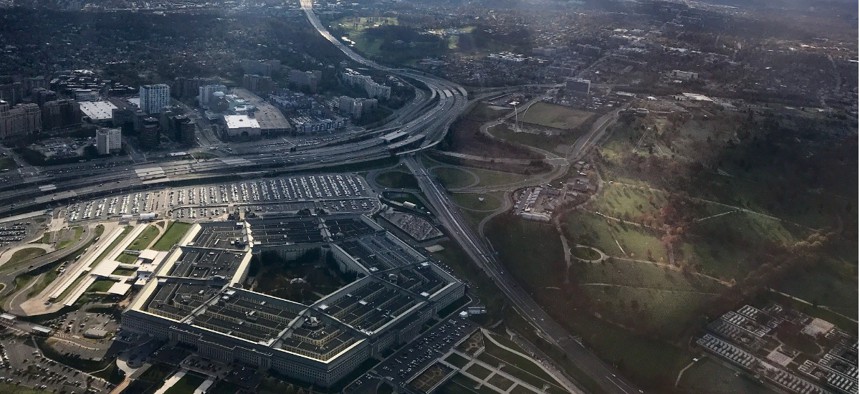DOD to Hire First-Ever Chief Digital and Artificial Intelligence Officer, Form New Office

Kiyoshi Tanno/istockphoto
The official will help supervise and integrate disparate AI efforts across the CDO, JAIC and DDS.
The Defense Department will hire its first chief digital and artificial intelligence officer and formally establish a new office under their purview—by next summer—via an organizational restructure it deems necessary to advance data and technology integration and innovation across its massive enterprise.
That to-be-selected executive, the CDAO, will report directly to Deputy Defense Secretary Kathleen Hicks, according to a memo published on Wednesday.
Once the office is formed, the senior official will supervise and support the meshing of all data-centered and AI-aligned work led by the Defense Department’s Joint AI Center, office of the chief data officer and Defense Digital Service.
“The intent here is not actually to create a new management layer—it's to shift the organizational construct to get greater integration and unity of mission, so that we can move faster and farther in the face of digital and AI innovation. So what that means in practice: the CDO, DDS and JAIC are each going to report up to the CDAO and create a tech stack that lets us integrate data, software and AI,” a senior DOD official told reporters on a call ahead of the announcement. “The goal there is to optimize their value and try to consider them more holistically.”
Market research and industry practices to “meet the pacing threat of China” influenced the department’s move to implement the new position, the official noted.
DOD envisions the office will begin performing in an initial operating capability, or IOC phase by February 1 and then reach full operational capability by June 1. Senior Advisor to the Deputy Secretary of Defense James Mitre was tapped to create an implementation plan equipped with a timeline and operational milestones, which will be submitted to Hicks by January 15. The senior defense official said Mitre will “do that in a consultative and collaborative way that will include DOD stakeholders, congressional staff, and outside experts.”
Though they didn’t confirm when the CDAO would be hired amid the broader process, the senior defense official said the department is actively searching “for the right leader to drive the kind of progress” it wants.
“In practice, that means we're looking inside and outside of the department, talking to sort of AI leaders and experts as well and very much, you know—as we work through developing the implementation plan and going to IOC and then IOC to FOC—are hoping that collaborative process helps us identify in a sort of form follows function way the right kind of senior leader to drive progress,” the official explained.
They added that no changes will be made to the leadership inside the JAIC, CDO and DSS, but clarified “rather, we're looking to identify the right leader to serve as an integrator across those organizations to work with all three leaders to drive this over.”
At IOC, the CDAO will work within the existing statutory requirements to organize, integrate and operationally align the JAIC, CDO and DDS.
“The JAIC is going to continue to be a critical enabler of AI capability and a leader in responsible AI. The Office of the CDAO is going to serve as a successor organization to the JAIC,” the official said. “This just means that the CDAO will be the lead AI organization in the department and the JAIC will report to it—and we'll have to work through what that process looks like over time.”
DDS will continue to serve as DOD’s “sort of digital fire brigade providing crisis response capabilities,” they added, but the CDAO will “help as an intervening supervisor and also take some of those new and innovative digital solutions and bring them to scale, and apply them to other problems.” And the department’s CDO will be operationally aligned to the CDAO’s office, but will continue to report to the defense secretary and deputy defense secretary through the chief information officer.
“The goal is that by FOC, we're going to actually submit the legislative proposals to adjust the authorities and reporting lines to more clearly establish the organization,” the official said.
During the discussion, the official acknowledged concerns that this shift might introduce more bureaucratic hurdles or challenge the independence of the entities. They noted that DOD’s ultimate aim is to create more connective tissue and reduce silos between the technology-driving entities. The organizations involved are all less than a decade old, and the official positioned the restructuring as a natural part of their evolution.
“Another way to think about this is we have these startups that are super effective—DDS, the JAIC, the CDO office—they are truly value-adds in the department. But now, we're reaching a maturity level of the technology and the requirements that we need a sort of series D funding injection with additional resources and attention and a sort of combinator or integrator that can help drive it to the next level,” they explained.
Harnessing all the disparate data sources into strategic assets and facilitating wider applications of AI, they added, will prove crucial to the department’s Joint All Domain Command and Control, or JADC2 effort.
“I guess I would say [the anticipated tech stack] is JADC2. JADC2 is the integration of disparate data sources into a common architecture that allows us to have clear—senior leader, down to operator decisions—decisions to drive warfighting improvement. To do that, you need a range of capabilities from a common data architecture, to a common development and deployment environment that allows you to take your applications, either digital or AI-enabled, and move them to the warfighter,” they explained. “For us to do that in a meaningful way at scale, and to accelerate progress on it, we really need a driver organization inside OSD to do that—and that's the intent here with the CDAO.”
NEXT STORY: VA Adding Physical Therapy Device To AI Roster



